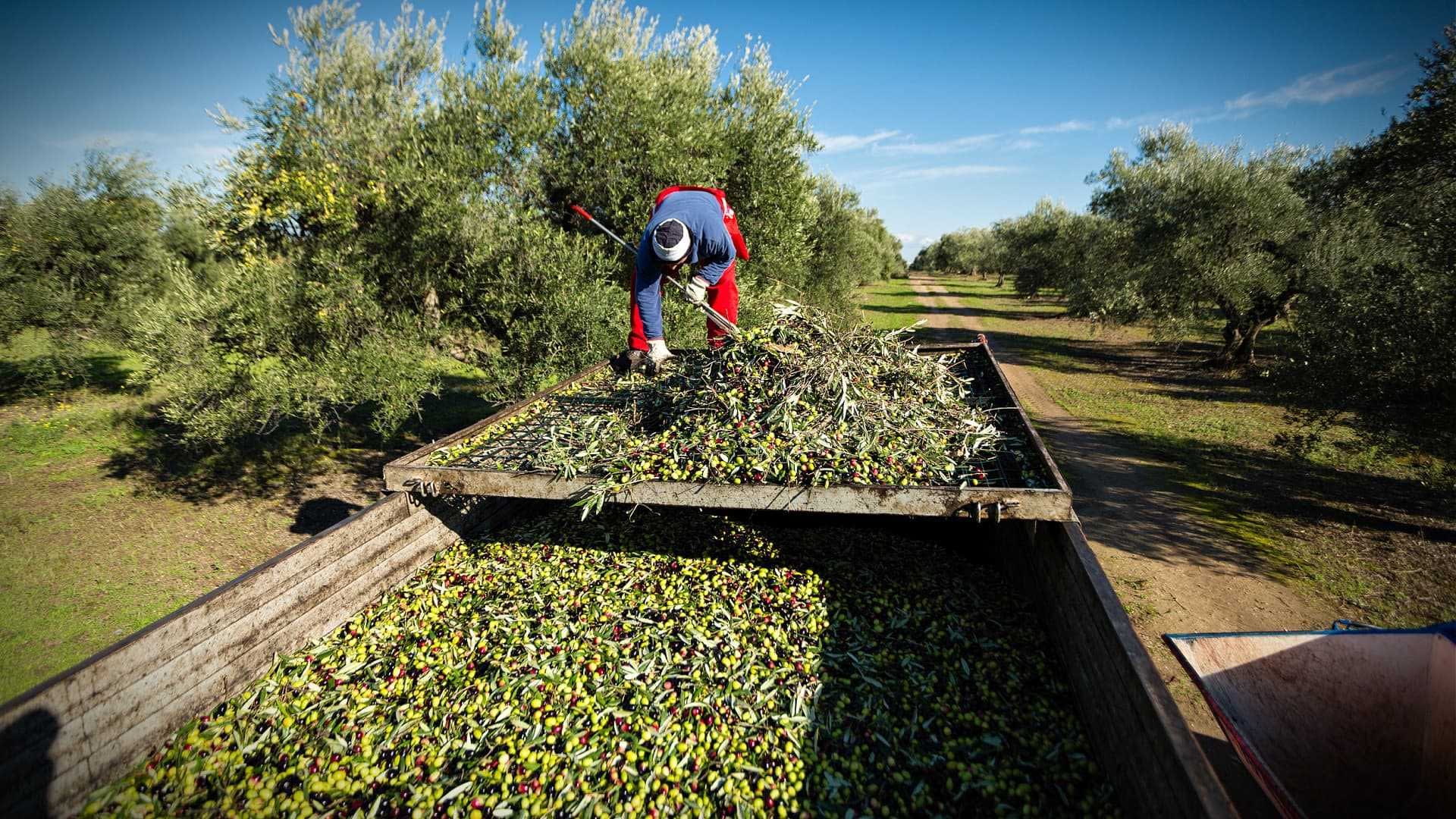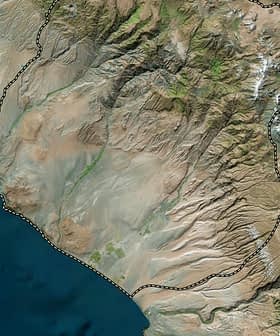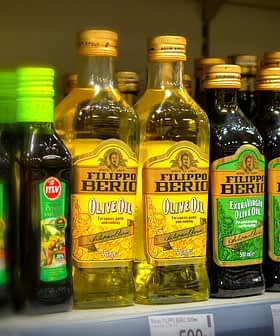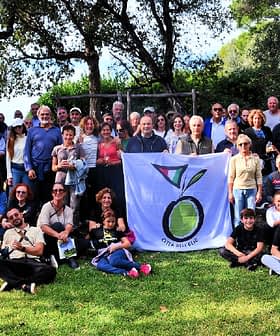Producers in Southern Italy in Crisis as Challenges Mount
From the hot and dry summer to the Covid-fueled labor shortages and unrelenting spread of Xylella fastidiosa, many farmers in Puglia find themselves in an emergency.
Puglia, Italy’s largest olive oil-producing region, is facing a crisis due to water and labor scarcity, the spread of Xylella fastidiosa, and low olive oil prices. The situation has led to delays in the harvest, workforce shortages, and a significant decrease in olive oil production, with local farmers struggling to cope with the challenges. Meetings are planned to discuss strategies for restoring production capacity and curbing the spread of Xylella fastidiosa in the region.
Italy’s largest olive oil-producing region is undergoing an unprecedented crisis, spanning water and labor scarcity to the spread of the deadly olive tree pathogen, Xylella fastidiosa.
On top of all this, local associations denounced a cumbersome bureaucracy attributed to institutional slowdowns that affect compensation and long-needed action in Puglia.
We have always faced challenges connected to our agriculture, but today we are in a so-called perfect storm in which a series of unfavorable events are tearing down the whole sector.
“The 2021 harvesting season will be remembered as Way of the Cross [painstakingly difficult],” said Raffaele Carrabba, president of the local branch of the Italian Agricultural Confederation (CIA).
See Also:An Estimated 33,000 Jobs Lost to Xylella Fastidiosa in PugliaCarrabba emphasized how yields are well below average, along with local olive oil prices. These factors have added to the strain facing many producers. For some, the situation has been even worse, with several reports of olive thefts in Bari and Foggia further stressing local olive farms.
The CIA has asked the government to let olive farmers hire local citizens receiving unemployment benefits and other forms of public economic support to help complete the harvest.
The farmers attribute the current workforce shortage to local institutions’ slow response to intervention requests sent in by farmers.
The farmers also warn that due to the Covid-19 pandemic, many seasonal workers from Eastern Europe have been unable to travel to southern Italy and participate in the harvest.
Local associations warn that given the growing difficulties, many farmers are abandoning their olive trees.

“While the Xylella fastidiosa bacteria is spreading in a large area across southern Puglia and is now showing up in the Bari province, many laborers did not earn any income for years,” said Luigi Visconti, the secretary-general of the Lecce workers union.
“Considering only the last 12 months, the agricultural workers’ official lists in the Lecce territory [in the south] show a decrease of more than 1,000 registered land laborers,” he added.
More than half of the Italian olive oil production comes from Puglia, and, given the high costs of production, most farmers end up selling their olive oil as soon as possible, whatever the price.
According to data from the Institute of Services for the Agricultural and Food Market (Ismea), extra virgin olive oil is currently selling for €5 or €6 per liter in the main markets. However, local sources told Olive Oil Times that some oil sells below that price.
GoFasano, a local Apulian newspaper, reported that prices set in many sales are currently wavering between €35 and €40 per 100 kilograms, which is well below the official quotation prices.
“We will not accept any speculation on the prices of olive oil, which is of extraordinary quality,” said Savino Muraglia, the president of the farming association, Coldiretti Puglia, and an award-winning local producer.
See Also:Puglia Warns Farmers of Ineffective Xylella Fastidiosa CuresHe emphasized once again how production costs have more than doubled in the past year “with significant consequences on the production chain, including growers and oil millers, who need to see their work being compensated correctly.”
Muraglia added that there needs to be intense scrutiny of the market to prevent speculation and protect prices at origin.
Some of the most important producing areas within Puglia are also experiencing a significant reduction of yields, indicating that the quantity of olive oil obtained from olives is less than average.
In the Bari and Andria, olive oil production has reached an average of 12 or 13 kilograms of oil per 100 kilograms of olives, far below the average 15 or 16 kilograms obtained in the last few years.
Olive farmers in Terlizzi, slightly north of Bari, have warned that skyrocketing production costs, low olive oil prices, the impact of Xyella fastidiosa and the workforce shortages are leading to many harvest delays.

“At the moment, the only solution to curtail and face these challenges is to delay the harvest, with the hope of obtaining better yields and better prices from olives,” the Free Farmers of Terlizzi wrote in a press release.
“But such a procedure would jeopardize the next season because the plants would undergo vegetative stress that could compromise the production of new olives,” the local committee added.
According to Coldiretti, drought and abrupt weather changes in many groves have led to a 30-percent production decrease, compared to the previous decade’s average.
While Coldiretti added that olive oil quality remains exceptionally high, further damage is being done by the continued spread of Xylella fastidiosa, which is leaving a trail of desiccated olive trees in more and more groves.
“What we are seeing here is a growing number of trees losing their typical traits, their color and the vitality of their branches,” local grower Daniel Maiellaro told Olive Oil Times. “Many farmers went back years ago to the best pruning practices, but that does not seem to be enough to stop Xyella.”
See Also:Italy Pledges €30 Million to Small and Medium ProducersIn Brindisi, in southeastern Puglia, farmers warn that “the phenomenon now affects all olive groves, with consequences on their productivity and a collapsing yield that in some areas can reach 50 percent less compared with previous years.”
In Lecce, which is slightly south of Brindisi, Coldiretti said, “Xylella fastidiosa has led to the loss of three out of four olives and a 70 percent collapse in 2021 olive oil production.”
In Ostuni, between Brindisi and Bari, 1,000 more olive trees will be destroyed because they are at risk of being infected with Xylella fastidiosa.
Almost 100 infected trees have been found in the Plain of the Monumental Olive Trees in the past week, 86 of which are in Ostuni.
Most of the infected trees were found within red zones, areas where the danger of contagion is significantly greater. Since 2013, an estimated 150,000 hectares of Apulian olive groves have been infected by Xyella fastidiosa.
According to the Agricultural National Informative System (SIAN), olive oil production in Puglia has declined since then, with decreases as high as 80 percent in Lecce and other significant declines in Taranto and Brindisi.
An estimated 21 million trees sprawling over 8,000 square kilometers, at least 40 percent of the region, have been infected by Xylella fastidiosa.
According to Coldiretti Puglia, new olive orchards have been planted in only four percent of the affected areas. In those cases, olive cultivars resilient to Xylella fastidiosa, such as Fs17 or Leccino, were planted.
Overall, 386,000 Xylella-resistant olive trees have been planted across 3,400 hectares. However, farmers said that these reclamation projects are not enough to revitalize production in the near future.
“The olive sector is now in an emergency situation,” local producer Onofrio Spagnoletti Zeuli told AndriaViva magazine. “Many might now say that they will abandon their lands, their productions. We have always faced challenges connected to our agriculture, but today we are in a so-called perfect storm in which a series of unfavorable events are tearing down the whole sector.”
In the next few days, a series of working meetings among stakeholders and local and national authorities will take place in Puglia and Rome, focusing on strategies for restoring Apulian olive oil production capacity and curtailing the spreading of Xyella fastidiosa.
Share this article









